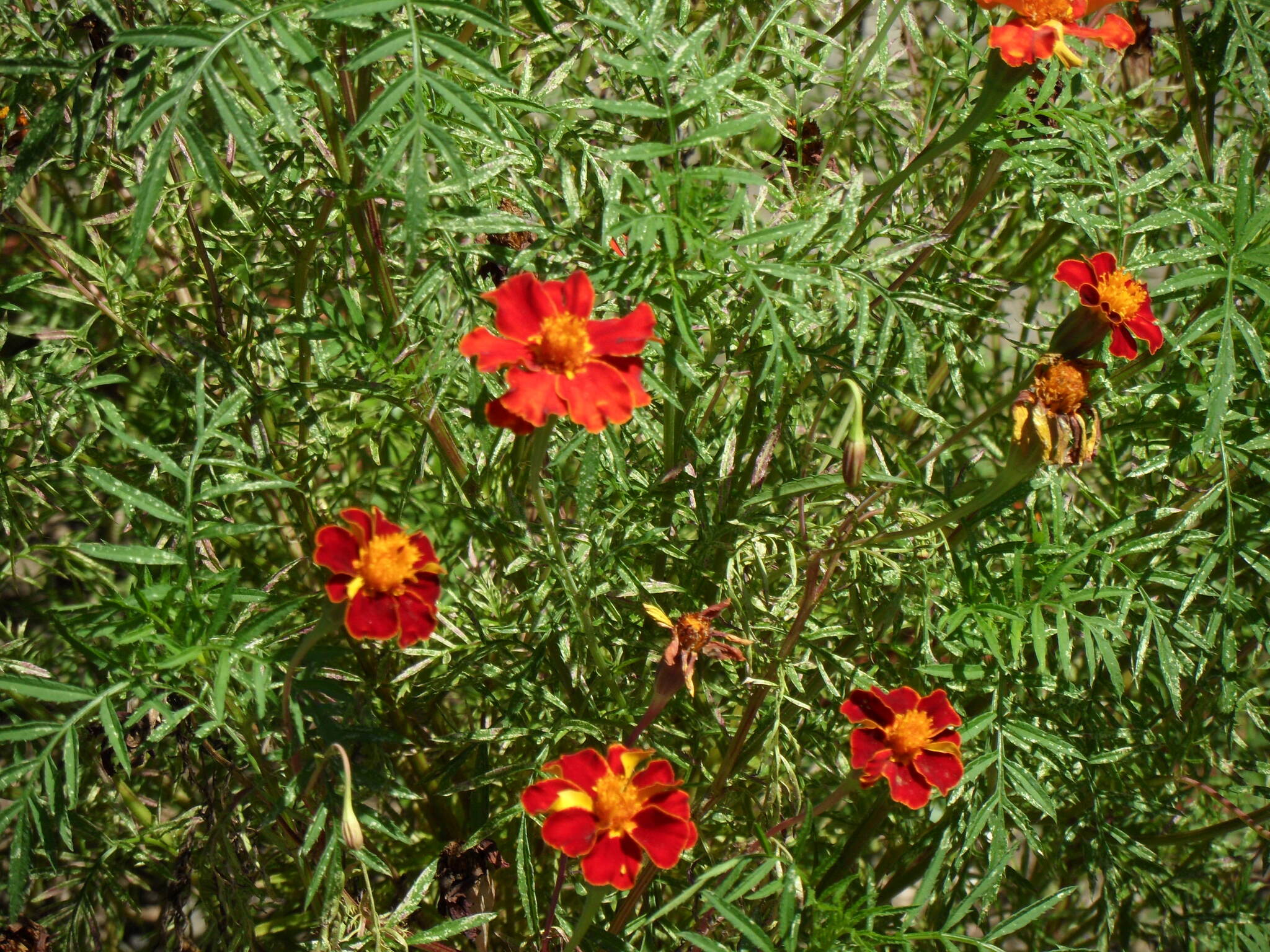
Derivation of name uncertain, possibly from Tages, an Etruscan god.
Annual or perennial herbs, glabrous to hairy. Stems erect, variously branched. Leaves along stems, opposite, sometimes alternate above, simple or pinnate, margins usually lobed or divided, gland-dotted. Capitula radiate or diskoid, terminal or axillary, solitary or few together, with stalks. Involucral bracts in 1 row, equal, united nearly to apex. Receptacle flat. Ray florets female, usually ligulate, reddish brown, orange, yellow or white. Disk florets bisexual, tubular, variously coloured. Achenes linear or clubshaped, sometimes angular, hairy or glabrous. Pappus of scales and/or 1 or more bristles.
One species has become naturalised in Australia.
Involucral bracts fused to form a cup-like structure; pappus of scales, usually with 1 or 2 longer than the others and bristle-like.
About 50 species from North, Central and South America.
Source: (2002). Dahlia. In: . Horticultural Flora of South-eastern Australia. Volume 4. Flowering plants. Dicotyledons. Part 3. The identification of garden and cultivated plants. University of New South Wales Press.
